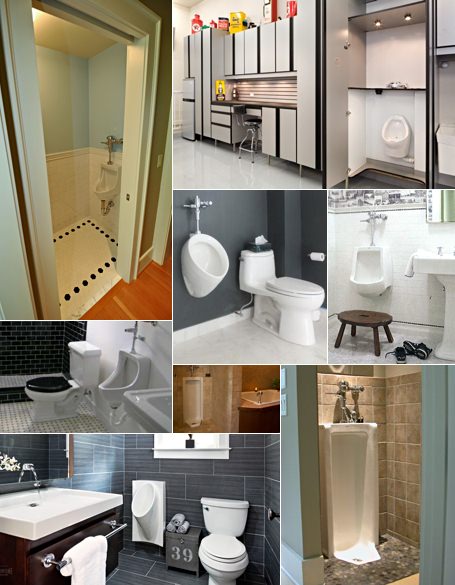A Better Bathroom
A simple checklist of upgrades that will make for a sharper start to your day.

I'll admit, the idea came to me after a few drinks. The thought hit me midstream—one hand leaning against the wall in front of me while the other one was, uh, finishing things up. "Why don't we have urinals at home?" I asked my buddy two partitions over. "I don't know," he said. "But if I was looking for a house and the realtor showed me one with a urinal in the bathroom ... sold." Just imagine the indulgent pleasure and ease of having a professional quality urinal installed in your bathroom.

Of course, it wouldn't need to be in your master bathroom. Especially if the lady in your life isn't all that eager to add that kind of fixture to her spa-like sanctuary. But it could certainly come in handy. Imagine a pit stop in your garage or workshop. You wouldn't have to trudge through the house all dirty from your project, and you wouldn't lose momentum or your train of thought.
It'd certainly put an end to the eternal war of the toilet seat. I'm sure many couples have ended up in therapy due to a man's unwillingness to remember to put the seat down. What man would mess with the toilet to pee if he had a perfectly good urinal to patronize? And to that end, she might also be eager to hear that most men don't have as much trouble aiming at a urinal as they do the toilet, thus sparring the bathroom floor from all those misfires.

The urinal was first patented in the United States immediately following the Civil War, when an upright flushing apparatus was introduced in 1866.
Speaking of saving, a urinal (especially the waterless variety) can save you both water and money. Rachel Wray Thompson, a Chicago-based architect who has installed waterless urinals in her clients' homes, has said she's surprised we don't see them more often. "Most of these fixtures rely on a liquid that floats at the top of the trapway at the base of the urinal," she says. "The liquid is less dense than urine and therefore allows the urine to drain through, while the trapping liquid stays on top to block odors and keep everything clean." Wondering how much water you would save? According to BuildingGreen, if there are two males in a home, each using the urinal three uses per day (accounting for 340 days at home) your waterless urinal would replace about 2,040 toilet flushes a year, providing annual water savings of about 3,250 gallons.
And while I'd love to tell you that having a urinal in your home will increase your property value, that's harder to prove on paper. A home's resale value won't likely be going up thanks to the addition of a urinal. Then again, if my buddy (or any other man, for that matter) is a prospective buyer, you just might be in luck.

The urinal was first patented in the United States immediately following the Civil War, when an upright flushing apparatus was introduced in 1866.